29th April 2022 – Shabbat is almost here.
And today we will listen to a very popular Yiddish song, Di Grine Kuzine, sung by a much appreciated performer, Theodore Bikel.
Hello, I hope you are well. I am ok. Despite the shock of the Ukrainian invasion, we are planning some things for this summer with my Ukrainian Hudaki Village Band and soon, on the 15th of May, I will travel to Zurich with my Spanish group Vigüela, with whom I will dance traditional Spanish styles (jota, fandango and seguidilla) and I am really excited about that. I don’t know if any MBS readers are in Zurich or nearby. In that case, the event is this.
And well, the last few issues of MBS have been quite dense and with an obvious and justified touch of sadness. In this edition, well, you could say we’re back to cheerfulness but we’re not. The piece, although it sounds more or less cheerful, speaks of something sad. It narrates the transformation of a young girl who emigrates to America from the old world and the result is anything but happy. Such is music, giving us a resource in which to create beauty out of despair. I hope you enjoy it.
Then, please, spread the word.
| Share this with a friend, right from here |
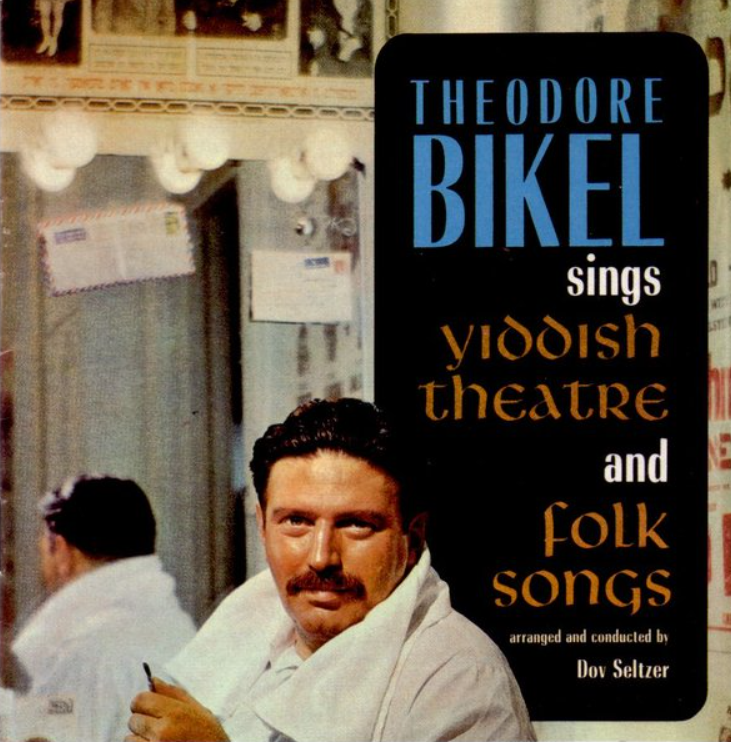
About the artist: Theodore Bikel
Theodore Bikel was our protagonist in this previous edition about him and the piece Yossel der Klezmer.
In a few words, he was born in 1924 in Vienna. He was an actor and a singer and he was even nominated to the Oscar. He and his family fled to Eretz Israel in 1938. In 1945 he moved to London to study and to the USA in 1954, where he would stay.
About his activities in music, he recorded several albums, including Jewish folk songs. He co-founded the Newport Folk Festival. In the 1960s he was active as a singer-songwriter and he collaborated with artists like Pete Seeger, Joan Baez, Bob Dylan or Peter, Paul and Mary. At that time he also started his activism for the civil rights. He performed more than 2000 times the role of Tevye the Milkman in Broadway.
He is very known and if you want to learn more about his biography, you will find many.
About the song Di Grine Kuzine
As I mentioned before, this song is about the transformation of an immigrant from Europe to the United States. Di Grine Kuzine translates as “the greenhorn cousin”. Greenhorn is a colloquial expression that means newbie.
The website of the Milken Archive offers an interesting article, in which explains the authorship question:
“Abe Schwartz was the first to copyright this tune and its lyrics (though the music copyright is only for his arrangement), but one Yankele Brisker, pseudonym for Jacob Leiserowitz, also claimed copyright for the lyrics, listing the tune as a “folk melody.” Yet a third claimant to the song was Hyman Prizant. Eventually it was republished and re-copyrighted, crediting Prizant with only the lyrics and Schwartz with the music—although again, in a particular arrangement. Meanwhile, Leiserowitz initiated a lawsuit, but did not prevail. Still, the truth about the authorship is impossible to know.”
And in Klezmer!: Jewish Music from Old World to Our World, by Henry Sapoznik, he explains that:
“On December 2 (1922) Schwartz quietly copyrighted the song in a charming arrangement for violin, clarinet, and bass. Less than two weeks later, the copyright office received music from another Yiddish composer, Hyman Prizant, for his song, “Mayn Kuzine” (My Female Cousin)—which was identical to Schwartz’s “Grine Kuzine.” While Schwartz and Prizant slugged it out, yet another composer, Yankele Brisker (the nom de plume of Jacob Leiserowitz) published his version of “Di Grine Kuzine,” listing himself as the lyricist and the music as “traditional.”
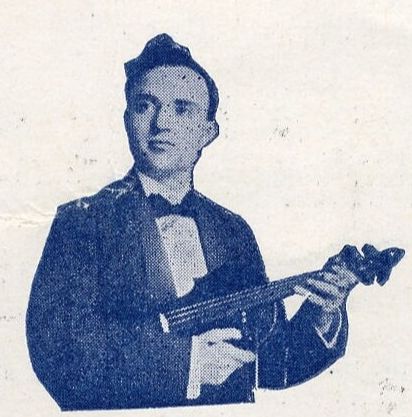 About Abe Schwartz
About Abe Schwartz
Abe Schwartz was a Romanian violinist and composer who emigranted to the USA at the very beginning of XX century. He will have his own MBS in the future. He is one of the klezmer pioneers in the USA and there are many great recordings of his band, for example, this one. The fact that he recorded his arrangement suggests to me that the piece was popular and it seems to me a detail to record only a particular arrangement and not the melody as such, under his authorship. I work with traditional music artists and it is clear that each one contributes in a different way but they cannot claim authorship of the piece, so we do this, indicating that the piece is in the public domain and the arrangement is their own.
The portrait of Abe Schwartz is of public domain and I got it from here.
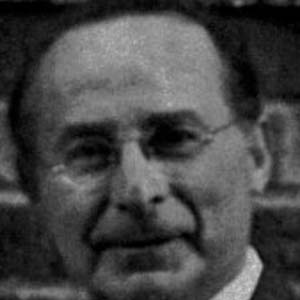
About Yankele Brisker
About Yankele Brisker/Jacob Leiserowitz, the website of the Jewish Music Research Center only mentions that he was a lyricist, active in the American Yiddish Theater, born in 1893 and deceased in 1965. The website of SaveTheMusic explains that he was born in 1891 in Brest-Litovsk (Grodno province of the Russian Empire, now Belarus). He studied in Odessa (currently Ukraine), for some years. He lived in Warsaw, from where he emigrated to the United States in the summer of 1913. In 1930-1955 he worked as a compositor and editor in the newspaper Freiheit. He died in 1967 in New York.
The portrait of Jacob Leiserowitz is from the website SaveTheMusic.
The University of Maine has this page with the sheet edited in 1922, mentioning Brisker as the author of the lyrics and the melody adapted from a Jewish folk song.
About Hyman Prizant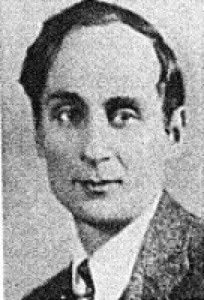
According to Discogs, from where his portrait is, he was an American actor of Jewish theater in Yiddish, a composer and songwriter, born in 1890 in Chisinau, Bessarabia province, now Moldova, and deceased in 1945, in New York, USA.
On the Wikipedia in Russian you can learn that he moved to the USA in 1905, shortly after the pogrom of Chisinau. He would return to Russia after his father’s dead that same year, where he started to perform in theatre. In 1906 he moved to London, worked for several theatre companies and toured in France and in Germany. In 1914 he returned to the USA. After that, he continued working in theatre and toured in Latin America and in several european countries. Wikipedia in Russian says he died in Los Angeles instead of New York.
The mention of the Chisinau pogrom caught my attention. Chisinau is the capital of Moldova. On the map in Google Maps you see the sign of several places related to Judaism:
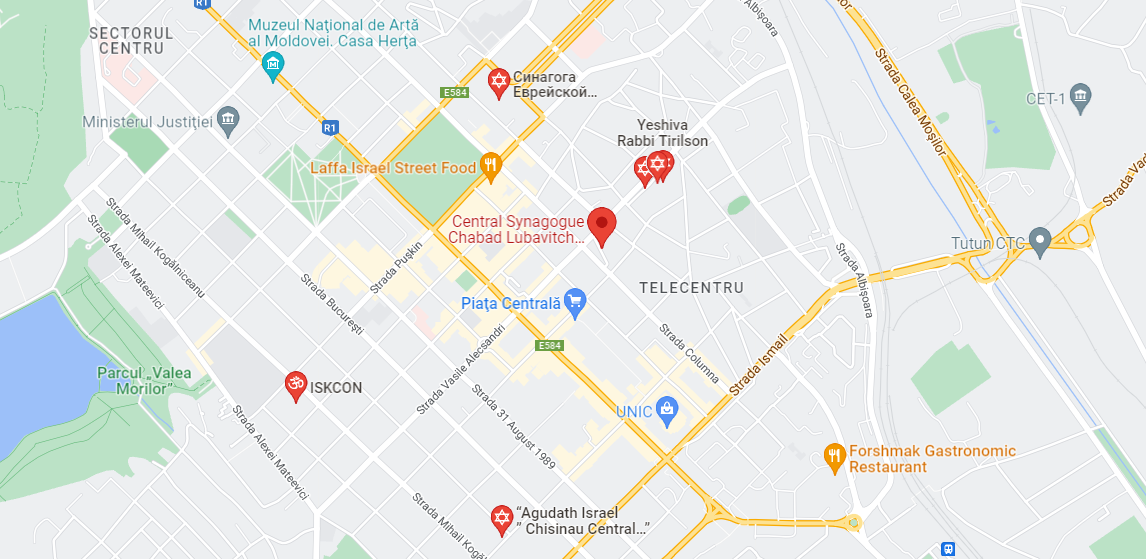
“As with other attacks organized against Jews, the Kishinev pogrom began with a “blood libel,” or the accusation that Jews murdered a Christian child to use its blood for ritual purposes. The region’s anti-Semitic intellectuals, including journalists, played a key role in stirring up animosity against Jews, making sure the masses knew it was permissible — and even desirable — to deal with them harshly.”
Nowadays there is a Jewish community in Chisinau, Hassidic Lubavitch.
This is the Lubavitch synagogue of Chisinau. The picture is from Google Maps, by the user Valeriu Vodnicear:
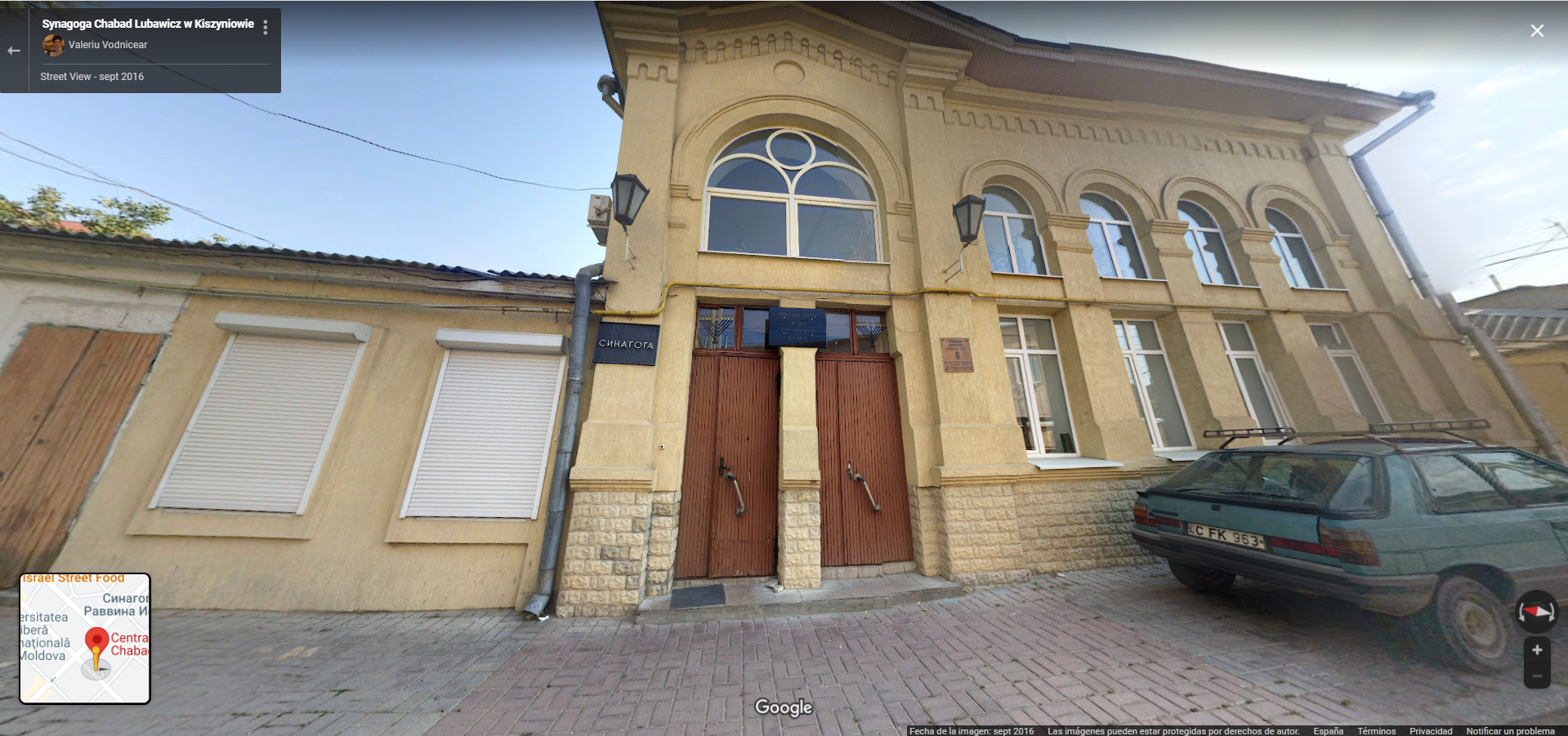
Another of the signals in the map is the old Yeshiva of Rabbi Tirilson street, that is in ruins. The picture is from Jewishgen and the author is Jay Sage. This page contains more pictures of relevant buildings in Chisinau related to the Jewish History:
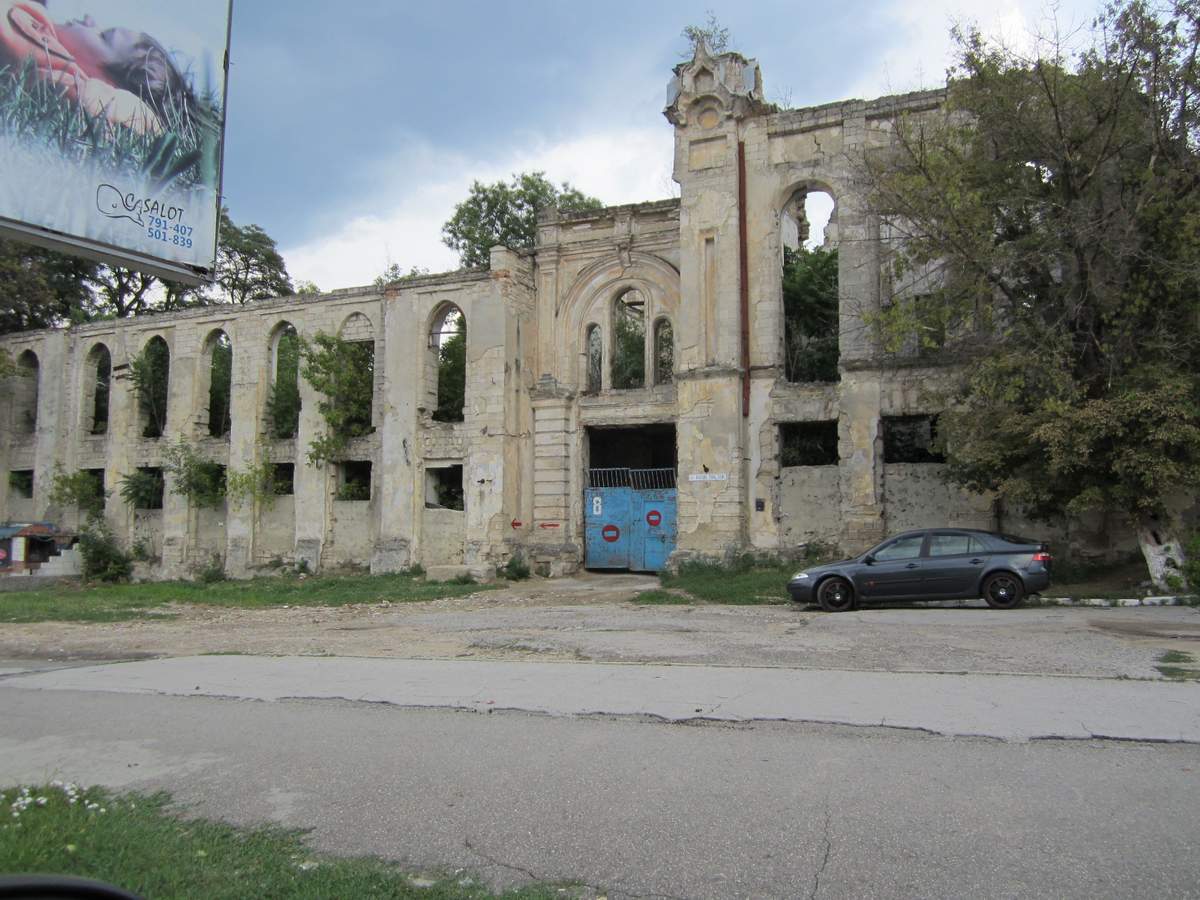
The lyrics of the song Di Grine Kuzine, both in Yiddish and in English, are available on the website of the Milken Archive.
| Share this with a friend, right from here |
About this recording of Di Grine Kuzine
It’s time to enjoy the music. Click the picture to listen to Theodore Bikel singing Di Grine Kuzine:
